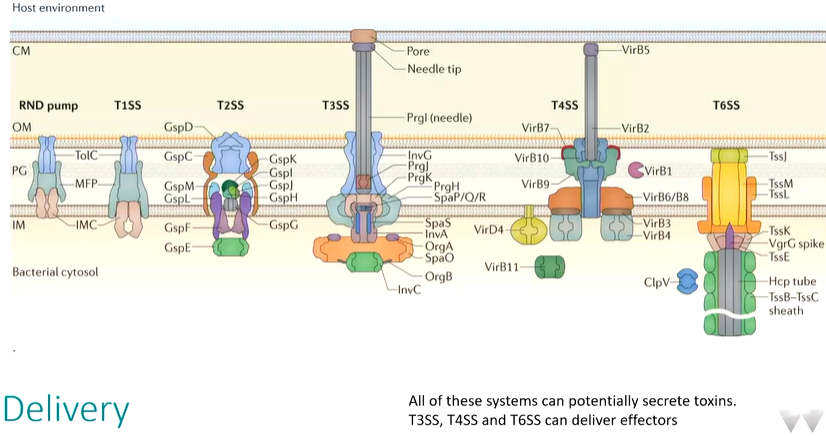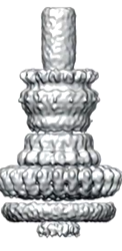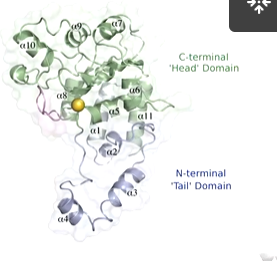lecture 15: bacterial effectors
effectors are small proteins made by infectious bacteria and are injected or secreted into host cells where they manipulate internal host cell biology for bacterial advantage.
Enteropathogenic E coli (EPEC) uses a lot of effectors to form its infections. This typically makes its home in the gut epithelium. They have a contacting ability to rest against cells as well as control the actin cytoskeleton of the cell by injecting effectors to make the cell “hold” onto the e coli. This is done through polymerisation of the actin in the cytoskeleton. As well as this, it removes the villi of epithelial cells due to their effectors that are injected.
Effectors are important for both pathogenesis and symbiosis - mostly are but not always dangerous as there can be symbiotic relationships with plants. Once inside cells, effectors modify the host biochemistry to benefit the bacteria. Effectors also work as a team and there are multiple effector proteins that are injected and work together
DELIVERY
these are some examples of bacterial secretion systems:

These systems only deliver small molecules across the membrane to the outside but cant inject into the host cell. There are secretion systems that can secrete into host cells such as type 3 and 4 which span the inner and outer member with a needle like assembly which pierce t he membrane of the host and provide a mean to inject small proteins - effectors - directly into the host cell cytoplasm. The type 6 secretion system is like a hypodermic needle and undergoes a conformational change and when positions close enough to a target cell, it can punch into the host cell. This is mainly used when fighting with other cells
There are relations between these systems and other systems as the type 3 system is related to bacterial flagella.
TYPE 3 SECRETION SYSTEM
theres been em studies of these systems to get the structure of them:

CYCLE INHIBITING FACTOR
this is a specific example of an effector. CIF protein has a c terminal head domain and an N terminal tail domain

the active site is found in the middle and is comprised of Cys, His and Gln. You can compare the structure to other proteins and it is seen that the head domain looks like cysteine protease so you can speculate that it is involved in protein hydrolysis. In human cells, Cif causes stress fibres to form - actin polymerisation. This suggests that Cif involves stress fibre formation. As well as this, there is an effect on the cell cycle where there is an increase in the number of cells that have an increase in two copies of the DNA - cell cycle arrested after division?
For the bacterium, this means that the gut epithelium where it is found cant renew so bacteria and microbes can take residence in the gut.
Cif produces stress fibres as seen above but the actual target is a small protein called Nedd8 which has similarities to Ub. The natural job of this is to act like Ub and attach to cyclins for cell cycle regulation. Cif binds to this and deaminates Q40 This means that glutamine is converted to Glutamate. This is a 1Da change. glutamate is charged and so Nedd8 cant be attached to the proteins it is attached to. There is a hydrophobic residue that pushes the N terminus of Nedd8 out of the way so that it can deaminate Q40
mimicry also shows up in effectors where the effector mimics a host protein. SSeL is a salmonella effector that helps it invade macrophages. SenP2 is a human enzyme. The effector has a similar structure and also function to the host protein. There are small differences but SSeL has similar structure and function to the host protein. There are small differences but the overall fold and residues are identical. Divergent mimicry - homologous mimicry - is when the mechanism and structure the effector is mimicking is identical to the host protein. This occurs when the bacteria gets the gene from the host which makes the protein related
SopA is also a salmonella effector protein that is similar to E3 ligase with similar shapes. Overlaying the images show the folds are different so the Sop effector has evolved independently. It is still mimicry as it is still doing the same function but the mimicry is not from a common ancestor. both the effector protein SopA and E3 ligase look similar and they have the same function but if you look closely, you can tell that the two proteins are not related. This is convergent mimicry